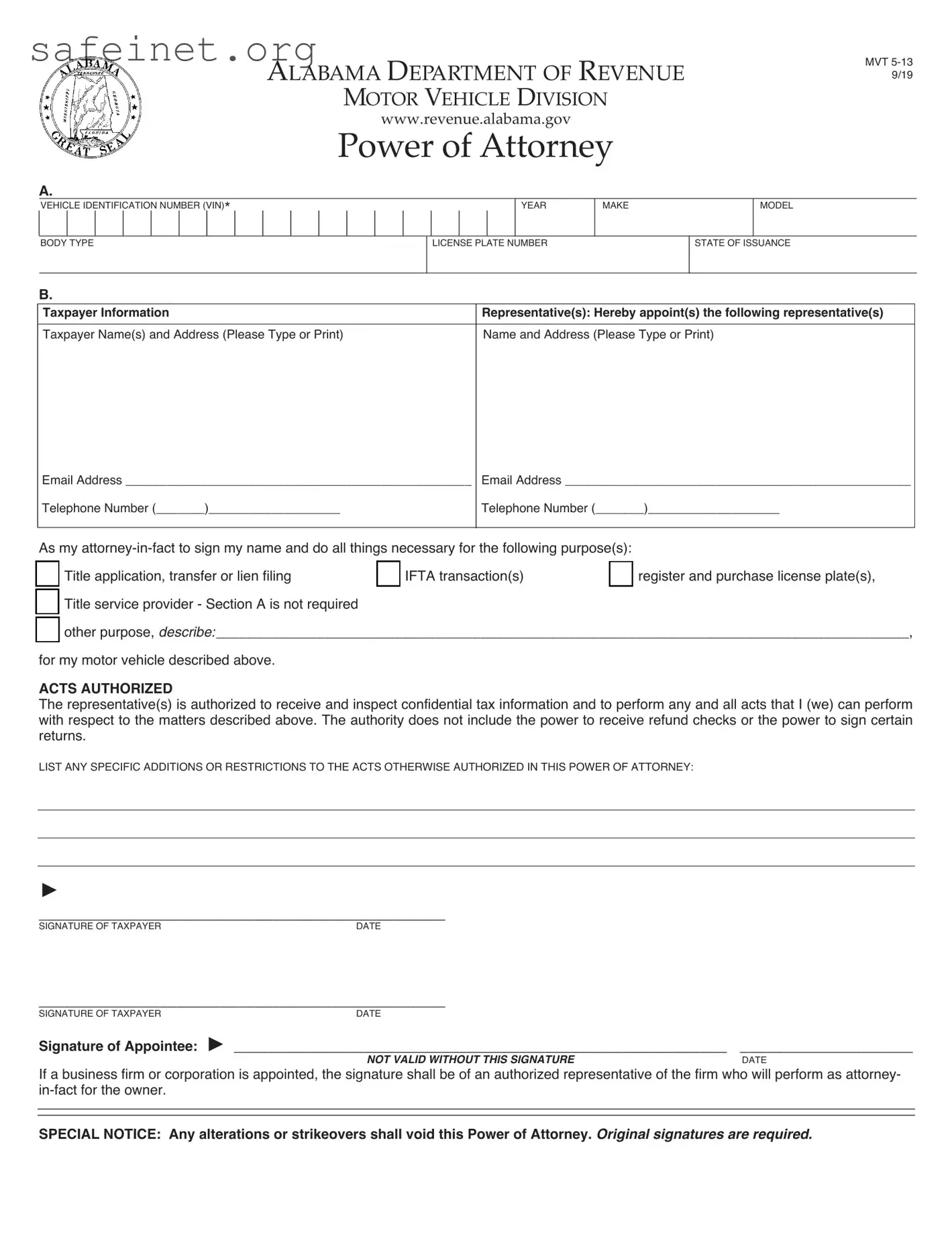What is the Vehicle POA mvt 5-13 form?
The Vehicle POA mvt 5-13 form is a Power of Attorney document allowing one person to act on behalf of another in matters related to vehicle registration, title transfer, and other motor vehicle-related processes. This form is essential when the vehicle owner cannot be present to complete these transactions personally.
Who can be a grantor and who can be an agent?
The grantor is the person who owns the vehicle and wishes to authorize someone else to act on their behalf. The agent, or attorney-in-fact, is the individual designated to handle the vehicle-related affairs. The agent can be a family member, friend, or a professional, but they must be trustworthy and over the age of 18.
When should I use the Vehicle POA mvt 5-13 form?
This form should be used when the vehicle owner needs to transfer vehicle ownership, register a vehicle, or address any other motor vehicle-related issues without being present. Situations may include being out of state, having health issues, or simply needing assistance in handling administrative tasks.
How do I complete the Vehicle POA mvt 5-13 form?
To complete the form, the grantor needs to provide their name, contact information, and details about the vehicle. The agent's information must also be included. The document must be signed and dated by the grantor. It's typically advisable to seek a notary's acknowledgment to ensure the form's legitimacy, although it may not always be required.
Is there a fee associated with using the Vehicle POA mvt 5-13 form?
There generally are no fees for simply completing the Vehicle POA mvt 5-13 form itself. However, there may be associated costs for notary services or filing fees depending on the requirements set by your local Department of Motor Vehicles (DMV).
How long is the Vehicle POA mvt 5-13 form valid?
The validity of the Vehicle POA mvt 5-13 form typically lasts until the specific tasks are completed or until the grantor revokes the authority. It’s crucial to review the regulations of your state, as durations and conditions may vary.
Can I revoke the Vehicle POA mvt 5-13 form?
Yes, the grantor has the right to revoke the Vehicle POA mvt 5-13 form at any time, as long as they are mentally competent to do so. To revoke the form, the grantor should create a written revocation, notify the agent, and provide a copy to the DMV if the agent has already acted on the power of attorney.

